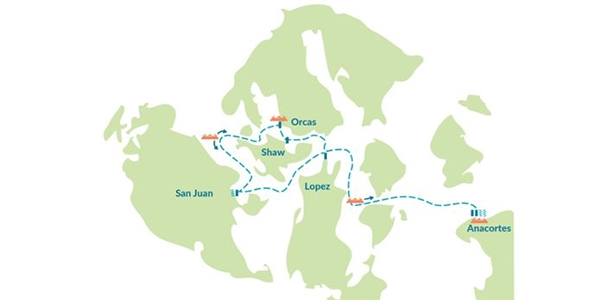— by Dr. Joe Gaydos from SeaDocSociety —
On August 19 and 20, a net pen owned by Cooke Aquaculture Pacific collapsed, releasing an undetermined number (estimates range from 4,000 to 185,000) of the 305,000 Atlantic salmon being raised there into the waters around Cypress Island, just northwest of Anacortes, Washington.
In a region where vast amounts of money and effort have been spent attempting to restore wild salmon runs, this mass escape of non-native fish has caused a public uproar. How could this happen? Will the Atlantic salmon spread disease to wild fish? Will they outcompete native salmon for food or freshwater spawning habitat?
To try and answer the questions, it’s valuable to look at the established science. Unfortunately, salmon spills like this are not new events in the Pacific Northwest.
People have been farming Atlantic salmon in Washington since 1982, and in British Columbia since 1985 (McKinnell and Thompson, 1997). Despite assurances from the aquaculture industry, wherever there are fish farmed in sea pens there are escapes.
In fact, on July 2, 1996 high tidal flows destroyed seven net pens at an Atlantic salmon farm near Cypress Island, releasing or killing 101,000 Atlantic salmon (McKinnell and Thompson, 1997). Sound familiar? The lessons from that and other releases should inform us about the risk that farmed Atlantic salmon pose for the Salish Sea’s five species of native salmon.
To read the full article, go to www.seadocsociety.org/salmon-escape-what-does-the-science-say/
**If you are reading theOrcasonian for free, thank your fellow islanders. If you would like to support theOrcasonian CLICK HERE to set your modestly-priced, voluntary subscription. Otherwise, no worries; we’re happy to share with you.**







What are the lessons?
I encourage reading the full story. It is the most helpful review of the potential consequences of the farmed salmon spill I have found to date. Thanks Joe.
There’s an interesting report from NOAA from 2001 about net-pen salmon farming in the Pacific NW. It reports that the State tried on 27 occasions from 1951 to 1991 to introduce some 75,00 Atlantic smolts into Puget Sound with no success. There was also no evidence to indicate any cross breeding with the native salmon. Still, hopefully, they will keep these pens on dry ground far away from the Salish Sea. And that our Canadian neighbors follow suit.